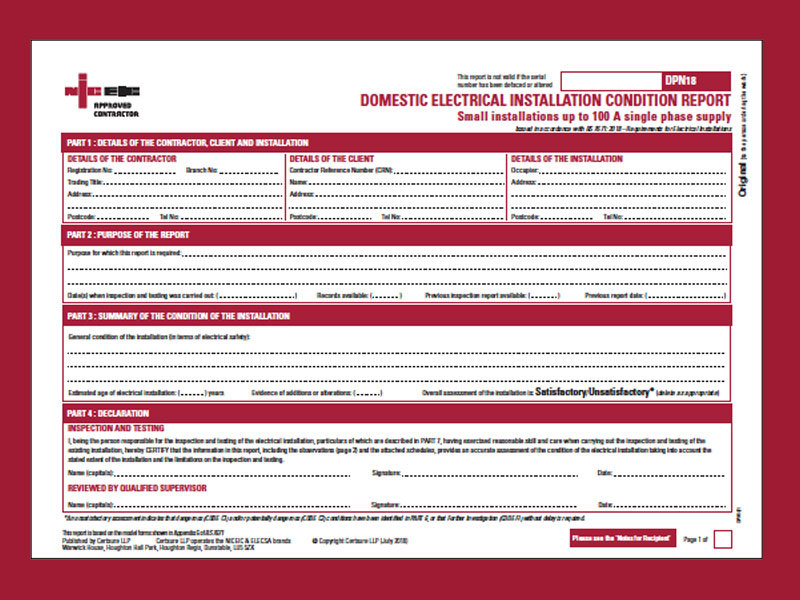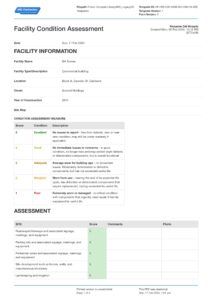Ensuring the safety of electrical installations in any property, whether it’s your home, a rented flat, or a commercial building, is not just a good practice, it’s often a legal requirement. An Electrical Installation Condition Report, commonly known as an EICR, serves as a vital health check for your electrical system, identifying any potential hazards or defects that could lead to serious issues like fires or electric shocks. It’s a comprehensive assessment that provides peace of mind and compliance with regulations.
Navigating the intricacies of an EICR can seem daunting, especially if you’re responsible for multiple properties or manage a facility where regular inspections are paramount. From understanding the various codes to documenting observations accurately, there’s a lot to keep track of. This is precisely where a well-structured and comprehensive electrical installation condition report template becomes an invaluable tool, simplifying the process for electricians, landlords, and property managers alike.

Having a robust template at your disposal can streamline the entire inspection and reporting journey. It ensures consistency in assessments, helps prevent oversights, and makes the final report easy to understand for all stakeholders. Whether you’re a seasoned professional or someone tasked with overseeing property maintenance, understanding what goes into an EICR and how a template can support you is fundamental to maintaining electrical safety standards.
Understanding the Electrical Installation Condition Report
An Electrical Installation Condition Report (EICR) is essentially a thorough examination of the electrical systems within a property to assess their safety and compliance with the current British Standard for electrical installations, BS 7671. Think of it as an MOT for your electrics, designed to identify any deterioration, defects, damage, or non-compliances that could pose a risk. This critical document is usually carried out by a qualified electrician and is a must-have for landlords in England (every five years or change of tenancy), and highly recommended for homeowners every ten years or when buying/selling a property.
The scope of an EICR is broad, encompassing various aspects of the electrical installation. It’s not just a quick visual check; it involves extensive testing to ensure circuits are properly earthed, insulation is intact, and protective devices are functioning correctly. The electrician will inspect consumer units, wiring, accessories, and earthing and bonding arrangements, providing a detailed breakdown of the installation’s condition. This rigorous process is designed to catch hidden problems that might not be apparent during everyday use.
During the inspection, the electrician will look for signs of wear and tear, overloading, outdated wiring, or any installation practices that do not meet current safety standards. They’ll use specialized equipment to conduct tests such as insulation resistance, earth fault loop impedance, and RCD tripping times. These tests are crucial for verifying the integrity and safety of the electrical circuits, ensuring that they can withstand normal operation and respond appropriately in fault conditions.
Once the inspection and testing are complete, the electrician will issue the EICR document. This report will detail their findings, including any observations or recommendations for remedial work. The report uses specific classification codes to indicate the urgency and severity of any identified defects, which are critical for the property owner to understand and act upon. These codes are standardized across the industry, providing a clear indication of what needs to be addressed.
Utilizing a well-designed electrical installation condition report template greatly assists electricians in systematically documenting every aspect of their findings. It ensures that all necessary sections are completed, from client details and installation characteristics to the outcomes of visual inspections and instrument readings. This comprehensive approach guarantees that the final report is thorough, accurate, and easily interpretable, helping to maintain high standards of electrical safety and compliance across all properties.
Key Sections and Outcomes in an EICR
The EICR details a number of important findings, categorized by urgency:
- C1 – Danger Present: This indicates that there is an immediate danger to those using the installation and remedial action is required without delay.
- C2 – Potentially Dangerous: This means there is a defect that could become a danger in the future and remedial work is recommended.
- C3 – Improvement Recommended: This suggests that improvements to the electrical installation would significantly enhance its safety, but it’s not immediately dangerous.
- FI – Further Investigation Required: This code is used when the inspector cannot fully assess a part of the installation and recommends further investigation to determine its condition.
Key Elements of an Effective Electrical Installation Condition Report Template
An effective electrical installation condition report template isn’t just a blank form; it’s a carefully structured document that guides the assessor through every necessary step, ensuring no stone is left unturned. It should be comprehensive enough to cover all aspects of BS 7671 requirements, yet intuitive enough to be easily completed on-site. The goal is to standardize the reporting process, making it consistent regardless of the individual carrying out the inspection, thereby enhancing reliability and clarity for the property owner.
A robust template will typically begin with sections for client and installation details, including the address, type of property, and the date of the inspection. It then delves into the specifics of the electrical system itself, such as the supply characteristics, earthing arrangements, and details of the consumer unit. Crucially, it provides dedicated spaces for recording observations from both visual inspections and the results of various electrical tests, ensuring a clear distinction between what was seen and what was measured.
Beyond mere data entry, a good template also includes sections for overall assessment and recommendations, incorporating those vital C1, C2, C3, and FI codes. It should also have provisions for the electrician’s details, qualifications, and signature, adding legitimacy and accountability to the report. The clear layout and logical flow of an electrical installation condition report template empower electricians to produce professional, compliant reports efficiently, fostering better communication about necessary remedial actions and ultimately contributing to safer electrical environments.
Essential Components for Your Template
When creating or choosing a template, ensure it includes:
- Client and Installation Details (Name, Address, Date of Inspection)
- Details of the Supply and Earthing Arrangements
- Characteristics of the Installation (e.g., number of consumer units)
- Extent and Limitations of the Inspection
- Schedule of Items Inspected (visual observations)
- Schedule of Test Results (e.g., insulation resistance, earth fault loop impedance)
- Observations and Recommendations with Classification Codes (C1, C2, C3, FI)
- Summary of the Overall Condition of the Installation (Satisfactory/Unsatisfactory)
- Declaration and Signature of the Inspecting Electrician
- Next Inspection Due Date
Adopting a high-quality template ensures that all essential information is captured systematically, minimizing errors and enhancing the credibility of the report. It transforms a complex technical assessment into a clear, understandable document, empowering property owners to make informed decisions about their electrical safety.
Maintaining the safety of electrical installations is a continuous responsibility, and the EICR is a foundational component of that commitment. By meticulously documenting the condition of your electrical systems, you are taking a proactive step towards mitigating risks and ensuring compliance with vital safety standards. Investing in and consistently using a detailed reporting method not only simplifies the administrative burden but also reinforces a culture of safety across all properties.
Ultimately, a thorough and well-documented electrical inspection serves as a critical safeguard against potential hazards. It provides clarity on necessary improvements and confirms that the electrical infrastructure is sound, allowing you to operate with confidence and peace of mind, knowing that you’ve done your part to protect occupants and property.



